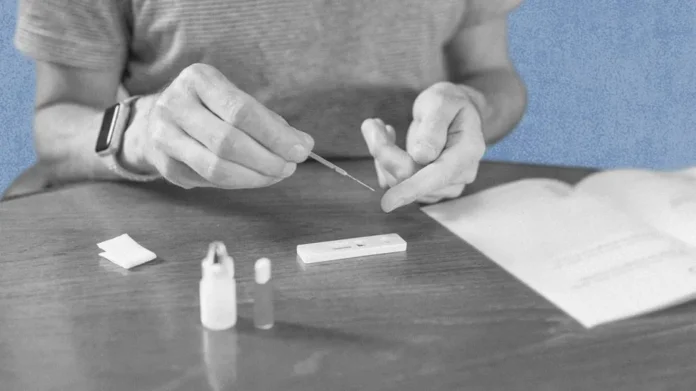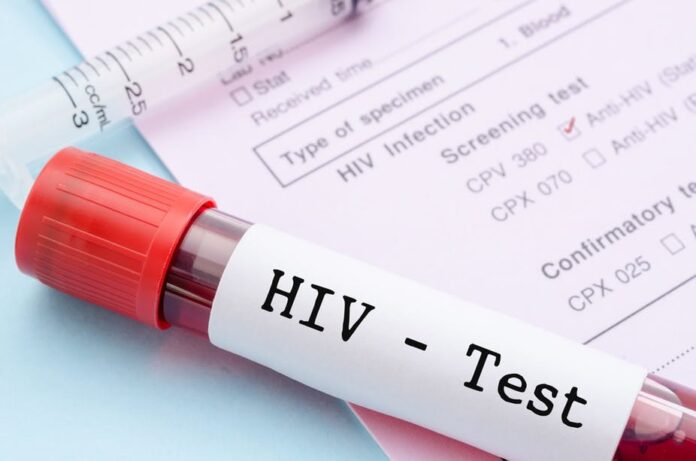Anyone with symptoms that are too ”fishy” or unusual should get tested and should check out their genital health. Men and women can experience different kinds of symptoms, such as thick discharge (women), or trouble and burning sensation when having to pee (men). Gonorrhea is an STD that will make your genitals itchy and sore, while also making your peeing uncomfortable. This just shows that both genders should get tested, and can have similar symptoms. Keep on reading as we discuss all the symptoms, as well as the accuracy of STD testing.
How does a gonorrhea test look like?
You will give urine samples in the morning. This is the best method for both genders. For men, urethral swabs can be collected. For women, samples can be collected using vaginal or cervical swabs. In some cases, you can also take a pelvic swab and collect the sample on your own (if you own the right needed kit). A smear of the sample can be placed on a microscope slide and treated with special stains that are known as Gram stains. They can read positive, meaning that you have gonorrhea or negative meaning that you don’t have it. Either way it may be you should contact your health provider and consult with them regarding your treatment.

How accurate is testing?
This will depend on your infection. The thing is, it takes time for the bacterial colonies to grow. This is why NAATs testing provides quicker results that are easily visible. NAATs are effective at detecting urogenital gonorrhea. On the other hand, they will not detect oral gonorrhea for an accurate reading. Once you are done with the test you should know that it takes cultures three-five days for bacterial colonies to grow. Once this time period passes by you will be given a call or you will receive an email regarding your test results.
Sensitivity and specificity – what is the difference?
These two are the key factors that you should understand when it comes to STD testing. However, no test is going to be 100% accurate 100% of the time. Understand that:
Sensitivity is a percentage of time when a test correctly confirms someone’s infection or disease
Specificity is a true negative rate, also known as a percentage rate of when a person is negative
The lower the sensitivity, the greater the risk of false negatives and vice versa. The lower the specificity, the greater the risk of false positives. This is why these readings are done in labs that have the best and highest quality equipment and standards.

The difference between false positives and false negatives
Both a false positive and a false negative are something that you should not look forward to in any case. The truth is, STD tests are not always accurate, but having a false reading can mess up your treatment. What if the disease has no serious long-term consequences but the treatment itself is harsh and constantly changing? On the other hand, what if something is so serious and requires immediate treatment? This is why you should get regular yearly check-ups and accurate therapy from the get-go. No one wants to chug pills, incorporate some antibiotics and probiotics if there’s no need for it. On the other spectrum, you don’t want to let your infection spread without acting quickly.
How accurate are other tests when it comes to STDs?

1. Chlamydia
Chlamydia just like gonorrhea is the most common STD in the USA. One data shows that for both STIs, a false positive is incredibly rare (99 percent of the time tests that come back negative are accurate). Both chlamydia and gonorrhea can be found in men and women.
2. Trichomoniasis
A common parasite that doesn’t cause symptoms for most people, but can be easily picked up. This STD is easily found when performing a genital swab. When doing the test this STD will show in 78-99% of cases.
3. Herpes
You should only test for herpes if you have serious doubts about it. Have your partners had it? Or are you having multiple partners at the moment? If you have a sore do a PCR test. It picks up herpes 96% of the time.

4. Syphilis
Doctors can’t send the bacterium that causes syphilis, spirochetes Treponema pallidum, for culture. This is why an antibody test is performed. You will end up 85% of the chances of catching it. It can be detected in men and women.
5. HPV
HPV strains can vary from cervical strains to those that will cause genital warts. Women can test for it easily through their cervix, while guys can’t. Women will end up with readings that are accurate 85-90% of the time. In a lot of cases, your body will fight off the infection on its own.
6. HIV
Testing for HIV is done through your blood. This test will pick up the disease 99.5% of the time, making it the most accurate test that you can do. You can do a nucleic acid test, antigen test, and antibody tests. Both men and women should do blood tests.

Start looking after your health right now
Taking care of yourself and paying close attention to your body and any changes is vital for men and women. Genital health, preventing cancer, as well as planning a family and working on it should be a list of priorities for everyone sooner or later. This is why you have to think about prevention. At stdtestingnow.com, you can do all of the tests that we have mentioned and talked about in this article. The best part? You can do all of this from the comfort of your home! Order a mall-in-kit at home and have the results in less than two days or visit a local lab and have the results the next day. Over 2 million people have tried their service, and everyone points out that it is not painful. Get tested yourself and stop worrying, but be proactive!









